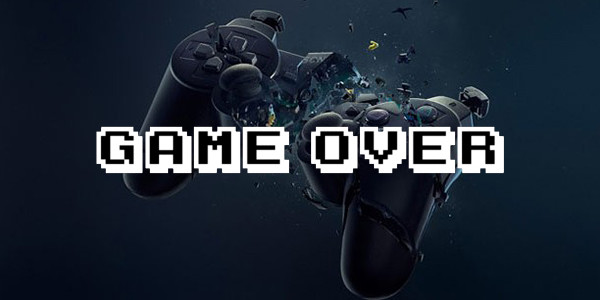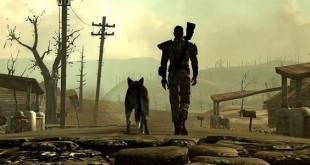Difficulty settings are commonplace in modern games, but it wasn’t always that way. In 1974, Speed Race showed up in arcades. This was one of the very first games (if not the first game) to include difficulty settings. Since then, a large majority of video games have included difficulty options, and this has created something of a rift between gamers with different tastes.
I play video games to relax and have fun. I love all kinds of games, and I’ve never been one to shy away from a challenge. I have been incredibly satisfied by playing games like Bioshock, Persona 4, and Halo on their highest difficulties, but I often find myself playing games on lower difficulties for a number of reasons. The first and foremost of these reasons is that I want to immerse myself in the story and world that the game is offering. I care more about the overall experience than I do about clearing the game on the hardest setting. I also feel that starting on a low difficulty level gives a game more replay value: once I’m done with easy mode, I’ll play medium. Then I’ll move on to hard. It keeps me playing games much longer than my friends who complete one playthrough on the hardest difficulty and then forget about the game entirely. Finally, I’m very busy, so sometimes I don’t have the time to grind for hours and hours to get ready for a boss – lower difficulty settings make grinding less grueling, and that allows me to enjoy the game at my own pace.
When I find myself getting brutally destroyed by the same enemy over and over again (I’m not referring to games like Bloodborne and Dark Souls, where the difficulty is a key element of the series), it really interrupts the willing suspension of disbelief – “a willingness to suspend one’s critical faculties and believe the unbelievable; [the] sacrifice of realism and logic for the sake of enjoyment.” Imagine being at a theater watching a performance of Les Misérables – you feel like you’re right there with the characters. You’re in chains with Jean Valjean, you’re fighting with the rebels – you’re taking this fantastical journey instead of just observing it. Suddenly, the person next to you starts loudly chatting on their cell phone. You instantly realize that you’re not a part of that world – you become aware that you’re just sitting in your seat watching a group of actors, and that you will return to your normal life in just a few hours. The same principle applies to games. When playing games, we like to become a part of the world we’re playing in. In Skyrim, I’m not just controlling my character – I am right there with them, looking through their eyes at mountaintops and feeling the heat of dragon fire. I don’t want these moments to end, and I’ve forgotten that I’m simply sitting on a couch with a controller in my hand – I am actually in Tamriel.
So let’s go back to last year when I played Wolfenstein: The New Order. I was interested in the alternative history setting that the game has created, and I wanted to spend my first playthrough experiencing the story without experiencing too much stress. When I went to look for an “easy” mode, I only found an option called, “Can I Play, Daddy?” When hovering over this option, the usually tough Blazkowicz appears wearing a bonnet and sucking on a pacifier.
Here’s where the rift starts getting wider. The difficulty selection screen in Wolfenstein: The New Order is funny, sure. But what it really does is mock players who want to play games in a way that makes them feel good. Some people love games like Dark Souls, where constant defeat and crushing difficulty are a part of the fun. But other gamers prefer a more easygoing experience. So why should developers like those behind Wolfenstein cater to and compliment the former while humiliating the latter? This doesn’t just hurt the gaming community – it hurts the gaming industry as a whole. The gaming community is getting larger and more diverse every year, which is a good thing. From a business perspective, we want these new gamers to stay in the community, and that means offering experiences that they can enjoy at their own pace. This can’t happen if the community values skill over passion.
Difficulty is an issue that I’ve discussed at length with my friends and colleagues that are gamers, and one thing always comes up: achievements and trophies. Don’t get me wrong – I love achievements and trophies. My heart dances with joy every time I hear the little pop of an achievement on my Xbox. However, it’s a bit odd that all of the people on your friends list can tell what difficulty you’ve been playing on, because this can become a problem. For example, I had a friend who was involved in a hardcore gaming club, where they did a lot of FPS competitions. When he finished Halo 4, the rest of the club was shocked that his profile didn’t display the achievements for completing the game on legendary, but just the achievements for completing the levels on any difficulty. They mocked him and told him that he wasn’t a “real” gamer. Someone who takes the time to clear every level of Halo 4 on legendary by themselves should surely get an awesome achievement as a badge of honor, but it’s important that we not look down on those that prefer different kinds of experiences. I can identify with this situation, as I have been the subject of countless “fake gamer girl” accusations, and a few of those involved my achievements and the difficulty levels on which I choose to play.
What is a “real” gamer then? I think it’s someone who has a passion for video games, not just somebody who only plays on the highest difficulty level available. For me, “hardcore” gamer means a person who plays a lot of video games and takes the industry and the art form seriously while respecting those in the industry and the community – not somebody who finishes every game they play on the most difficult setting and then brags about it and mocks those who played the same game on lower difficulty levels.
No matter how you play games, you should play in a way that makes you happy. Play in a way that makes you feel good. Have fun with your games. If you’re playing a game on the hardest difficulty level and you stop having fun, don’t be ashamed to push the difficulty down a level. After all, games are about having fun – difficulty levels are there so that players can use their personal preferences to maximize their enjoyment. So whether you want to play the upcoming Etrian Odyssey 2 Untold on the relaxing “Picnic” difficulty level or test your skills on the “Expert” difficulty level, you should go for it – as long as you’re having fun, you’re just as much of a “real” gamer as anybody else.
What difficulty levels do you like to play on? Let us know what you think in the comments below, and keep checking back with LoadTheGame for more video game news!
***These opinions are my own and do not reflect the views of any of my fellow journalists at Load The Game***
 Load the Game Video Games, Reviews, Game News, Game Reviews & Game Video Trailers
Load the Game Video Games, Reviews, Game News, Game Reviews & Game Video Trailers



